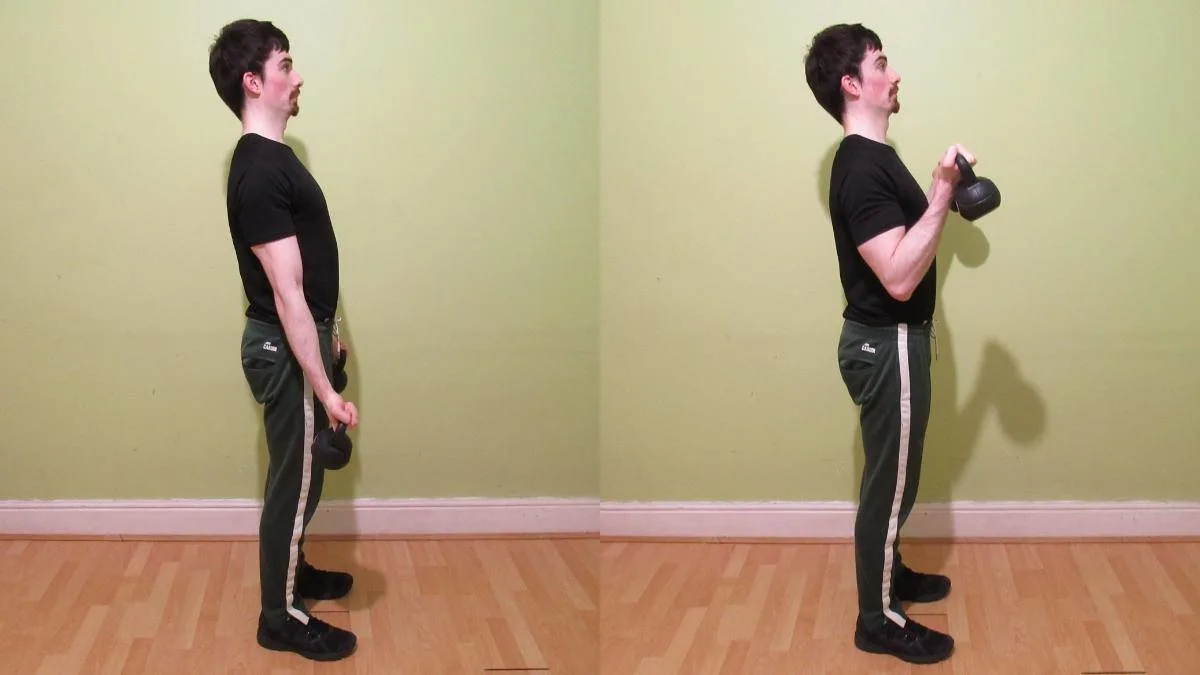What are biceps for if not curling heavy weights? A lot of things, probably, like lifting heavy shopping bags and flexing in the gym mirror. But besides all that, getting a great kettlebell bicep workout is very high up on the list of priorities for many lifters.
This tutorial shows you how to do kettlebell curls with the optimal bicep-building technique. Then we’ll discuss the effectiveness of the exercise and the variations that are possible.
Kettlebell curl exercise details
- Also Known As: KB curl
- Main Muscles: Biceps brachii
- Secondary Muscles: Brachialis, brachioradialis, forearm flexors
- Exercise Type: Strength
- Exercise Mechanics: Isolation
- Difficulty Level: Beginner
- Equipment Needed: Kettlebells
How to do kettlebell curls correctly
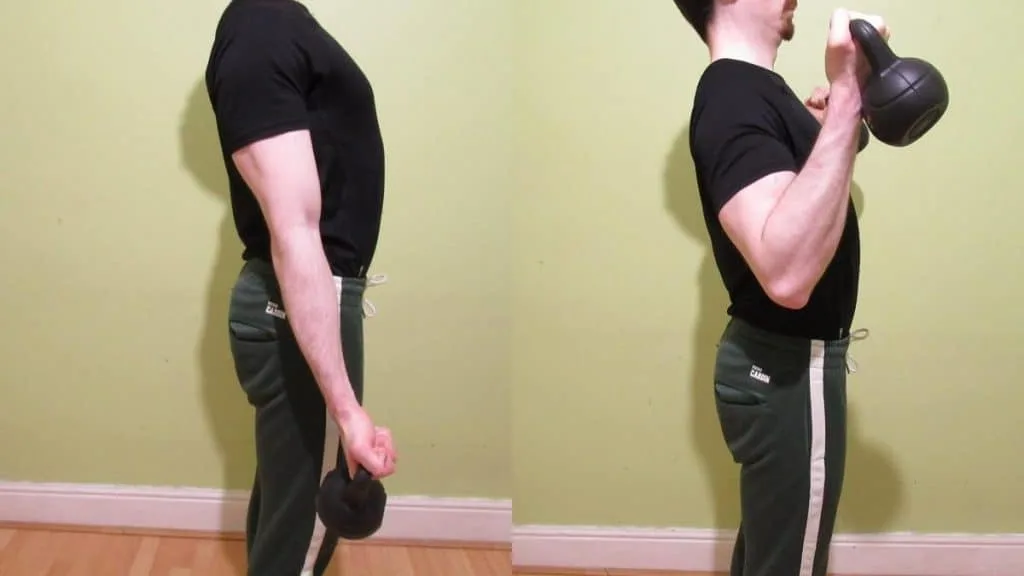
- Hold two kettlebells by your sides with an underhand grip.
- Curl the kettlebells toward your shoulders.
- Keep curling until the undersides of your forearms press up against your biceps.
- Hold the contraction for a moment and then lower the weights under control until your elbows reach full extension.
- Repeat for 3-5 sets of 8-15 reps.
How effective are kettlebell curls?

The kettlebell bicep curl is a highly effective exercise in that it overloads your arms with resistance. But depending on your point of view, it also has an advantage over other similar exercises (see our kettlebell curls vs dumbbell curls comparison for more info).
Up to a point, kettlebells are easier to hold than other kinds of free weights. This is because the weight of the bell is behind your hand, which means that your forearms don’t have to flex as hard to hold it.
However, past a certain weight, the handles of the kettlebells can become very thick. This indeed makes them much harder to hold onto, but that may actually be a good thing if you want to strengthen your grip while simultaneously building your biceps.
If, on the other hand, you want to focus purely on training your biceps, then kettlebell bicep curls might not be your best option because you’ll have to put more effort into holding the weight.
Who should do kettlebell curls?
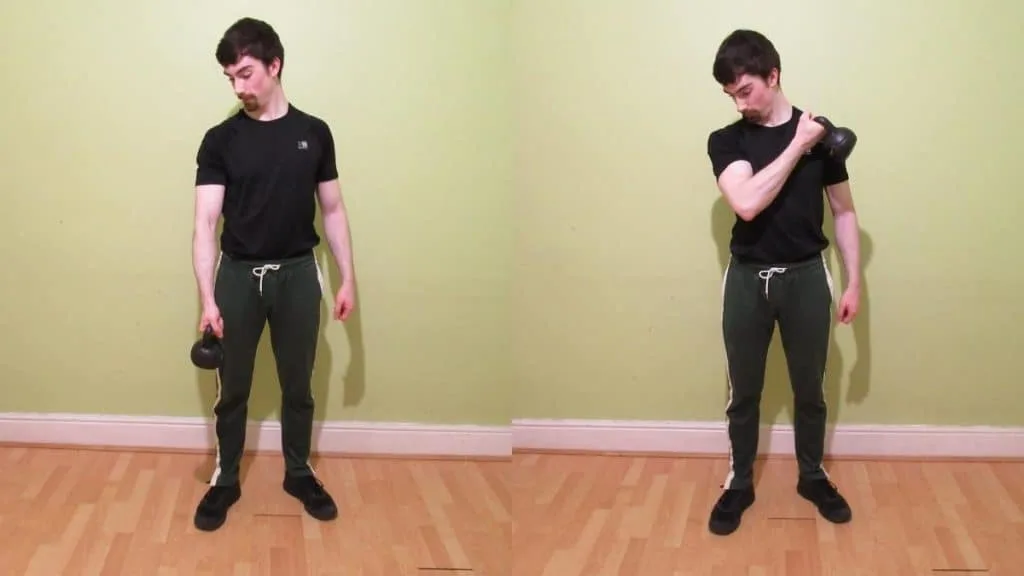
If you enjoy functional training and want as much carryover to your compound movements as possible, then it makes sense to use kettlebells for some of or all of your auxiliary lifts and isolation exercises.
This isn’t because the kettlebell biceps curl has some kind of magic muscle building effect; rather, it’s because doing your curls with kettlebells simply gets you used to gripping kettlebells which, as mentioned, is helpful if you perform a lot of other kettlebell drills.
Ultimately, kettlebell curls are one of the most effective and accessible bicep exercises for women and anyone else who wants to strengthen and tone their upper arms.
Kettlebell curl benefits
Kettlebell curls aren’t to everyone’s liking, especially since not all gyms have kettlebells that increase in manageable weight increments. Nonetheless, there are still some advantages to using kettlebells for curls rather than other types of weights.
Stronger grip
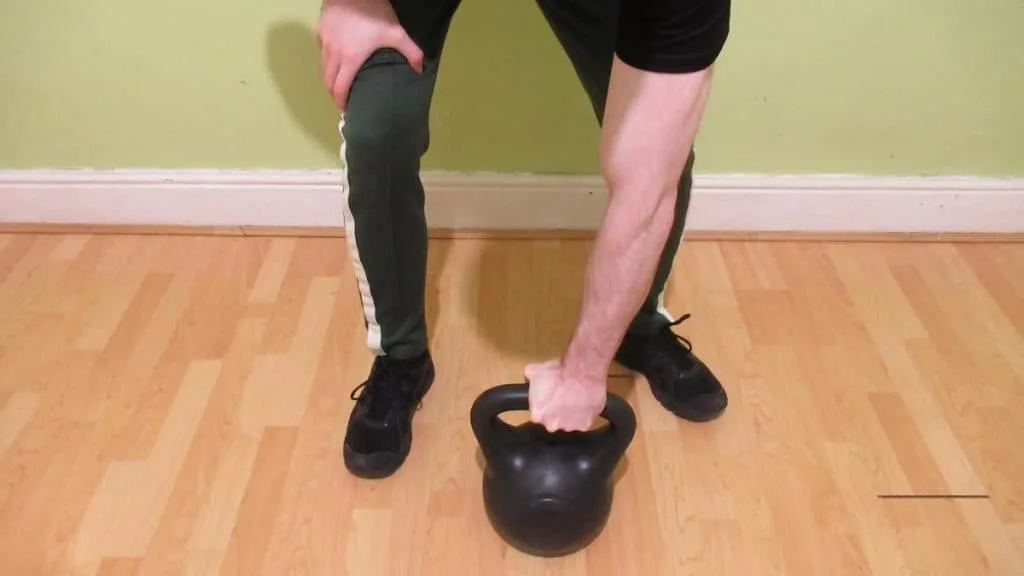
There are two main ways to do a kettlebell curl in terms of your grip.
To focus purely on your biceps, you can relax your forearms and let the weight hang behind your hand. This approach is better for maximizing hypertrophy of the biceps.
The other option is to flex your forearms intensely in order to keep your wrists straight. While this approach will undoubtedly set your lower arms on fire, it’s sub-optimal for the biceps because it entails lifting significantly lighter weights.
In this regard, kettlebell biceps curls are highly versatile because you can use them to achieve different goals.
Better bicep development
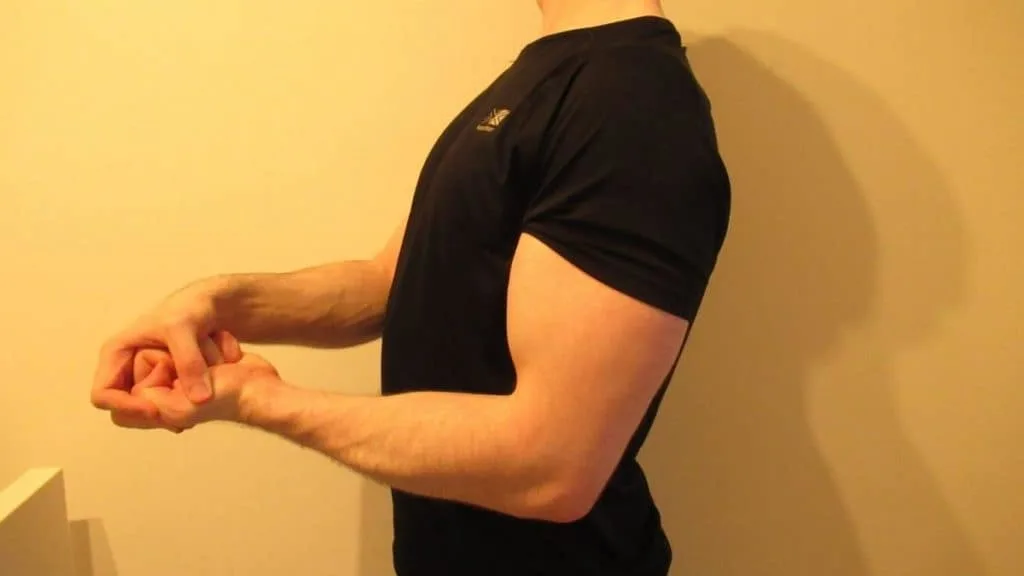
This one’s obvious, but it bears repeating.
Many lifters who focus on functional training are very pessimistic toward isolation exercises like the kettlebell curl because they somehow don’t see them as functional.
While I can understand their reluctance to spend their lives isolating each individual muscle group, the kettlebell bicep curl is still beneficial because it can increase your strength on compound movements.
If you have a weak link in the chain (i.e., lagging biceps), then exercises like rows and chin-ups will be much harder, and your back muscles will never achieve proper stimulation if your biceps keep giving out before them.
They’re versatile and convenient

You can do the kettlebell bicep curl standing up to increase your core activation (and if you don’t have access to a bench).
Or, you can opt for the seated kettlebell curl to maximally isolate your biceps by reducing the core stability requirement of the exercise.
They’re also convenient because no other equipment besides kettlebells is required.
Hence, kettlebell curls are one of the most effective at home bicep exercises.
Plus, if you only have access to a single kettlebell, that’s fine too because you can just train one arm at a time, which may actually help to improve your mind-muscle connection.
Kettlebell curl variations
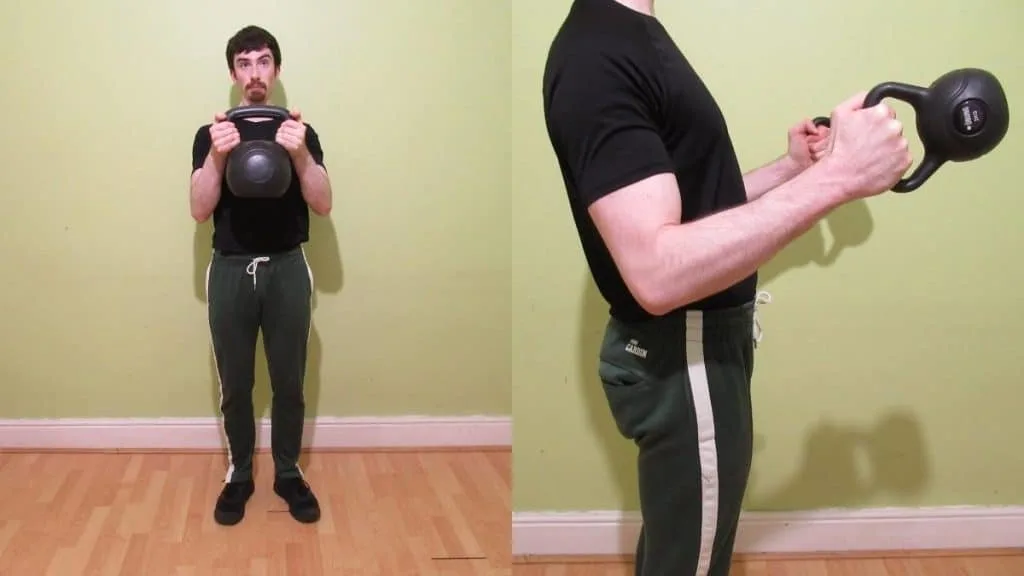
There are more than 7 variations of kettlebell curls (and many more different types of bicep curls) that you can do to build your biceps. You can click the links to see a full tutorial for each type of KB curl and to learn which version is right for you and your goals.
- Kettlebell hammer curl
- Kettlebell preacher curl
- Kettlebell spider curls
- Kettlebell concentration curl
- Kettlebell Zottman curl
- Incline kettlebell curls
- Kettlebell reverse curls
- Kettlebell crush curl
Conclusion: Should you do kettlebell bicep curls or not?
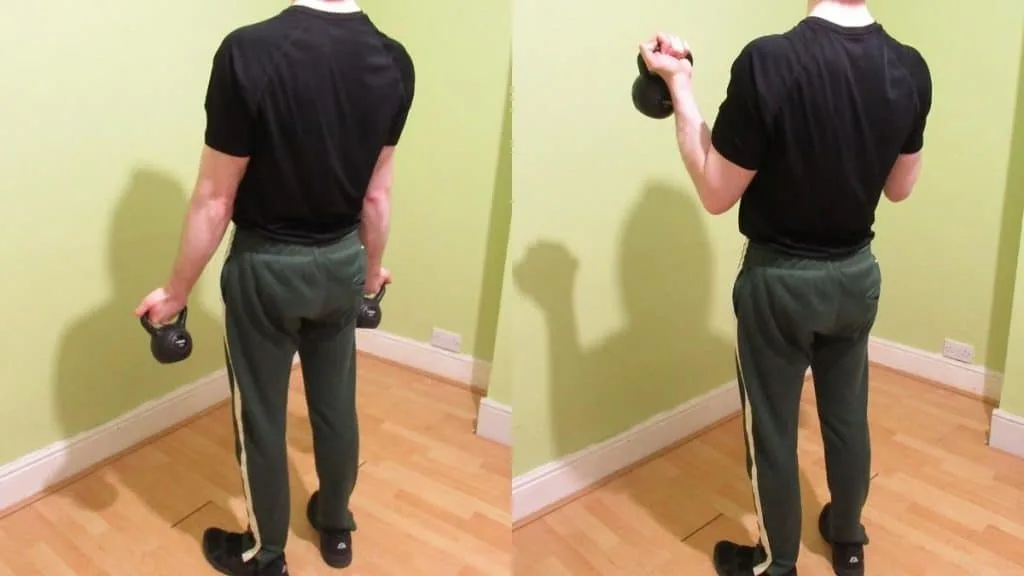
The kettlebell bicep curl offers a lot of benefits, most of which you can achieve from other bicep curls. However, if you want as much carryover to your kettlebell compound movements as possible, then doing kettlebell curls is a wise idea because it gets you accustomed to holding your training tool of choice.
It’s recommended to perform slightly higher reps than usual when using kettlebells for curls because as the weights get heavier, they can become difficult to hold onto for prolonged periods of time. This may actually be a benefit if you want to strengthen your grip, but for isolating your biceps, you want to try and take other muscles out of the equation whenever possible.
References
- Chen, H. T., Wu, H. J., Chen, Y. J., Ho, S. Y., & Chung, Y. C. (2018). Effects of 8-week kettlebell training on body composition, muscle strength, pulmonary function, and chronic low-grade inflammation in elderly women with sarcopenia. Experimental Gerontology, 112, 112–118. https://doi.org/10.1016/j.exger.2018.09.015
- Lyons, B. C., Mayo, J. J., Tucker, W. S., Wax, B., & Hendrix, R. C. (2017). Electromyographical Comparison of Muscle Activation Patterns Across Three Commonly Performed Kettlebell Exercises. Journal of Strength and Conditioning Research, 31(9), 2363–2370. https://doi.org/10.1519/jsc.0000000000001771

